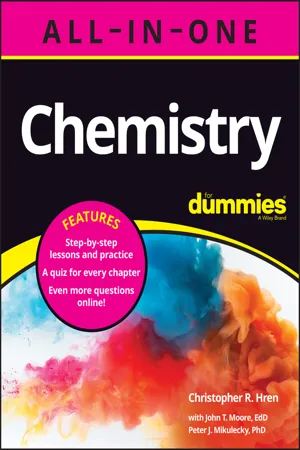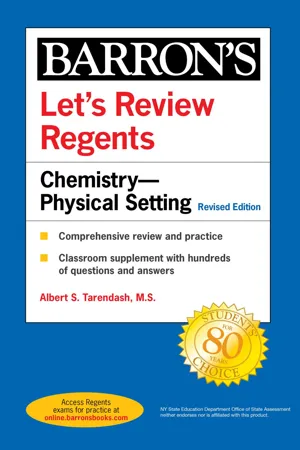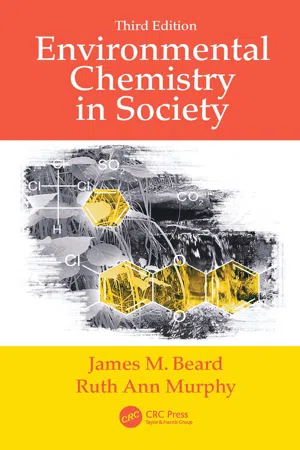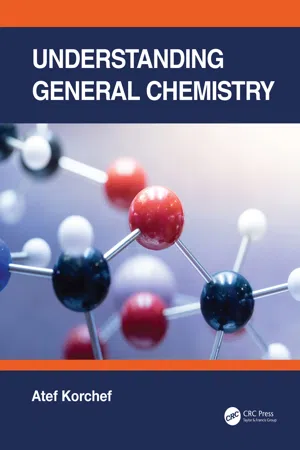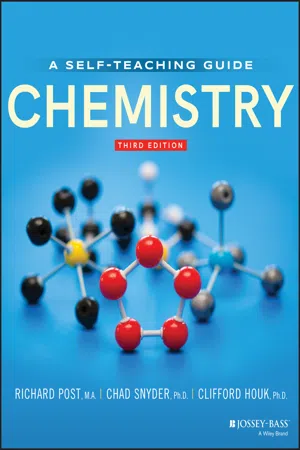Chemistry
Period 3 Elements
Period 3 elements refer to the elements found in the third row of the periodic table. These elements include sodium, magnesium, aluminum, silicon, phosphorus, sulfur, chlorine, and argon. They exhibit a wide range of properties, from metals to nonmetals, and their electron configurations follow the pattern of filling the 3s and 3p orbitals.
Written by Perlego with AI-assistance
Related key terms
Related key terms
1 of 4
Related key terms
1 of 3
10 Key excerpts on "Period 3 Elements"
- eBook - ePub
- Himanshu J Patel(Author)
- 2023(Publication Date)
- CRC Press(Publisher)
Chapter 14 Period — III Chemical Industries14.1 Introduction
A chemical element that belongs to the third row (or period) of the table of chemical elements is known as a period 3 element. As atomic number of elements increases, it is located with same chemical behavior with skipping itself. The eight elements that make up the playing time are argon, sodium, magnesium, aluminum, silicon, phosphorus, sulfur, and chlorine. While the others are found in the p-block of the periodic table, the first two, sodium and magnesium, are members of the s-block. These three elements and at least one stable isotope are both naturally occurring. Table 14.1 represented atomic and physical properties of these elements including atomic number, electron configuration, ionization energy electron affinity electro-negativity, etc.Table 14.1 Atomic and physical properties of element of period - IIIProperties Element of period - III Na Mg Al Si P S Cl Ar Atomic number11 12 13 14 15 16 17 18 Electron configuration[Ne]3sl [Ne]3s2 [Ne]3sl3pl [Ne]3sl3p2 [Ne]3sl3p3 [Ne]3sl3p4 [Ne]3sl3p5 [Ne]3sl3p6 Chemical SeriesAlkali Metal AlkaliEarth Metal Post-transition nonmetal Metalloid Reactive nonmetal Reactive nonmetal Reactive nonmetal Noble gas Atomic Radius (pm)186 160 143 118 110 102 99 94 Ionization Energy (kJ/mol)502 744 584 793 1017 1006 1257 1526 Electron Affinity (kJ/mol)52.8 0.0 42.5 133.6 200.0 141.0 349 0 Electro-negativity (Pauling scale)0.93 1.31 1.61 1.9 2.19 2.58 3.16 - Melting Point (°C)98 639 660 1410 44 113 -101 -189 Boiling Point (°C)883 1090 2467 2680 280 445 -35 -186 Density (g/cm5)0.534 1.85 2.34 2.267 0.00125 0.00143 0.001696 0.0008999 14.2 Sodium
Sodium (atomic number 11, symbol “Na”) is a delicate, silvery-white metal that is extremely reactive. The Latin word “natrium” is the source of the English word sodium. Humphry Davy first created sodium in 1807. It was isolated sodium element by electrolysis of fused sodium hydroxide. Sodium is element of group 1 in periodic table, because it has only one electron in its outer shell. This electron is rapidly donated and become Na+ cation. 23Na is the only stable isotope of it. In the crust of the Earth, it is the sixth most prevalent element. Sodium reacted quickly with water to give sodium hydroxide, hydrogen and energy. Sodium is exposed to air, it produce sodium oxide coating having opaque grey color on its surface. Nitrogen and sodium do not interact, not even at very high temperatures. Common ores of sodium are chile saltpeter (NaNO3 ), trone (Na2 CO3 ·2NaHCO3\ .3H2 O), borax (Na2 B4 O7 ·10H2 - Christopher R. Hren, John T. Moore, Peter J. Mikulecky(Authors)
- 2022(Publication Date)
- For Dummies(Publisher)
Chapter 6 “The Electron”).Take a look at your new friend, the periodic table, in Figure 5-1 . Notice the horizontal rows and the vertical columns of elements:- Periods: The periodic table is composed of horizontal rows called periods. The periods are numbered 1 through 7 on the left-hand side of the table. The atomic numbers increase from left to right in each period. Even though they’re in the same period, these elements have chemical properties that are not all that similar. Consider the first two members of period 3: sodium (Na) and magnesium (Mg). In reactions, they both tend to lose electrons (after all, they are metals), but sodium loses one electron, whereas magnesium loses two. Chlorine (Cl), down near the end of the period, tends to gain an electron (it’s a nonmetal).
- Groups: The vertical columns are called groups , or families . The families may be labeled at the top of the columns in one of two ways. The older method uses Roman numerals and letters. Many chemists (especially old ones like me) prefer and still use this method. The newer method simply uses the numbers 1 through 18 (Figure 5-1 shows both systems of numbering). The older method is usually used in describing the features of the table because it helps relate the position of an element on the periodic table with its number of valence electrons more than the 1–18 grouping system does.
The members of a family do have similar properties. Consider the IA family, starting with lithium (Li) — don’t worry about hydrogen, because it’s unique and doesn’t really fit anywhere — and going through francium (Fr). All these elements tend to lose only one electron in reactions. And all the members of the VIIA family tend to gain one electron. The elements within any group have very similar properties. The properties of the elements emerge mostly from their different numbers of protons and electrons (see Chapter 4- eBook - ePub
- Jeffrey Gaffney, Nancy Marley(Authors)
- 2017(Publication Date)
- Elsevier(Publisher)
An understanding of this periodicity of the chemical properties of the elements allowed chemists to predict how elements would combine and how they would behave when reacting with other elements. The development of the Periodic Table of the Elements can thus be compared to the discovery of the “Rosetta Stone,” which provided the key to the translation of ancient languages into modern text and for the first time allowed scholars to be able to understand the meaning of ancient documents. Similarly, the periodic table effectively organizes the elements into classes according to their electronic configurations, providing the key to understanding and predicting the chemical behavior of the elements. In order to effectively use the periodic table to predict chemical properties and behavior of the elements, it is important to first know how its structure relates to electronic configurations.The general layout of the modern periodic table is shown in Fig. 1.12 . It arranges the elements in vertical columns called groups. There are 18 groups in the periodic table numbered 1–18. Elements in the same group generally share the same chemical properties with clear trends associated with increasing atomic number going down a group. Some groups are known by family names to indicate the similar properties that they share. Group 1 is called the alkali metals (lithium, sodium, potassium, rubidium, cesium, and francium). Group 2 is known as the alkaline earth metals (beryllium, magnesium, calcium, strontium, barium, and radium). Group 17 is the halogens (fluorine, chlorine, bromine, iodine, and astatine) and group 18 is the noble gases (helium, neon, argon, krypton, xenon, and radon). Elements in groups 3–12 are known collectively as the transition metals.The elements are also arranged in seven horizontal rows called periods because the periodic properties of the elements increase systematically with increasing atomic number going across a row. There are seven periods in the periodic table numbered 1–7. The number of each period corresponds to the principal quantum number of the outermost electron shell containing electrons for all elements in the period. So, the elements in period 1 contain electrons only in the n = 1 shell, while the elements in period 2 contain electrons in the n = 1 and n = 2 shells, and elements in period 3 contain electrons in the n - Albert S. Tarendash(Author)
- 2021(Publication Date)
- Barrons Educational Services(Publisher)
masses of the elements. This arrangement led to some problems, however, because the atomic masses of the elements do not increase regularly. Compare, for example, the atomic masses of tellurium (Te) and iodine (I).In the early twentieth century, physicist Henry Moseley (England) discovered what we now call our modern periodic law: The periodic properties of the elements are functions of their atomic numbers. This means that the Periodic Table should be arranged in order of increasing atomic number—which it is! However, the basis of the Periodic Table is the (ground-state) electron configuration of each element.Passage contains an image
9.3 THE MODERN PERIODIC TABLE
The modern Periodic Table is described in terms of periods (the horizontal rows) and groups (the vertical columns). Each period is indicated by a number, beginning with 1 and currently ending with 7. Elements in the same period have the same number of occupied principal energy levels. For example, the elements sodium (Na) and phosphorus (P) are in the same period—3. Therefore, sodium and phosphorus have three occupied principal energy levels. The period number of an element also tells us the valence level of the element: the valence level of sodium and of phosphorus is also 3.The groups begin at the left side of the table (Group 1) and continue through Group 18 on the right side. Elements within a group share similar properties, and this likeness is directly related to the similarities in the electron configurations of their valence levels. For this reason, we also call a group a chemical family. For example, the elements in Group 13 constitute a chemical family: Atoms of Group 13 elements each have three valence electrons. Consequently, the properties of the elements in this group are similar to one another. (We note, however, that the word similar does not- eBook - ePub
- James M. Beard, Ruth Ann Murphy(Authors)
- 2021(Publication Date)
- CRC Press(Publisher)
For example, we would expect lithium, sodium, potassium, rubidium, cesium, and francium in column 1, or group 1 as it is usually called, * to be chemically similar materials, and they are. Similarly, we would expect the elements in group 17 to be similar to one another in their chemistry. Fluorine, chlorine, bromine, iodine, and astatine undergo similar types of chemical reactions. Only the elements in groups 3–12, called the transition metals, and those listed at the bottom of the periodic table are similar to one another in the horizontal direction; for example, iron (26), cobalt (27), and nickel (28) show many similarities with one another. To begin with, we will focus on the first rows or periods of the table. In the first three periods, the atomic numbers increase from 1 to 18. The atomic number, as noted earlier, corresponds to the number of positive charges on the nucleus and also the number of electrons around the nucleus. The bonding properties are related to the number of electrons. It is clear that after we pass the first two elements, hydrogen and helium, every ninth element will be similar. In other words, after the eight elements that are different, the ninth element will be similar to the first; that is, there are eight groups of similar elements. Bonding occurs not only because of the interaction of electrons between one atom and another but also specifically because of the interaction of the outer electrons. In atoms except hydrogen and helium, we find that the inner electrons are too far from the edge of the atom to interact with other atoms. These outer electrons are usually referred to as valence electrons. How many valence electrons are there in any given atom? There generally seems to be eight or fewer for the smaller atoms - eBook - ePub
Chemistry
The Molecular Nature of Matter
- Neil D. Jespersen, Alison Hyslop(Authors)
- 2018(Publication Date)
- Wiley(Publisher)
When the concept of atomic numbers was developed, it was soon realized that the elements in Mendeleev’s table were arranged in precisely the order of increasing atomic number. That it is the atomic number—the number of protons in the nucleus of an atom—that determines the order of elements in the table is very significant. We will see later that this has important implications with regard to the relationship between the number of electrons in an atom and the atom’s chemical properties.The modern periodic table is shown in Figure 2.1 and also appears on the inside front cover of the book. We will refer to the table frequently, so it is important for you to become familiar with it and the terminology applied to it.Periodic tableFigure 2.1 The modern periodic table. At room temperature, mercury and bromine are liquids. Eleven elements are gases, including the noble gases and the diatomic gases of hydrogen, oxygen, nitrogen, fluorine, and chlorine. The remaining elements are solids.Special Terminology of the Periodic Table
In the modern periodic table the elements are arranged in order of increasing atomic number. The horizontal rows in the table are called periods , and for identification purposes the periods are numbered. Below the main body of the table are two long rows of 14 elements each. These actually belong in the main body of the table following lanthanum( La: Z = 57 )and actinium( Ac: Z = 89 ), as shown in Figure 2.2 . They are almost always placed below the table simply to conserve space. If the fully spread-out table is printed on one page, the type is so small that it’s difficult to read. Notice also that in the fully extended form of the table, there is a great deal of empty space. An important requirement of a detailed atomic theory, which we will get to in Chapter 7 , is that it must explain not only the repetition of properties, but also why there is so much empty space in the table.- Recall that the symbol Z stands for the atomic number.
Figure 2.2 Extended form of the periodic table. The two long rows below the main body of the table in Figure 2.1 are placed in their proper places in the table.The vertical columns in the periodic table are called groups , also identified by numbers. However, there is not uniform agreement among chemists on the numbering system. In an attempt to standardize the table, the International Union of Pure and Applied Chemistry (IUPAC) officially adopted a system in which the groups are simply numbered sequentially, 1 through 18, from left to right using Arabic numerals. Chemists in North America favor the system where the longer groups are labeled 1A to 8A and the shorter groups are labeled 1B to 8B in the sequence depicted in Figure 2.1 . (In some texts, groups are identified with Roman numerals; Group 3A appears as Group IIIA, for example.) Note that Group 8B actually encompasses three short columns. The sequence of the B-group elements is unique and will make sense when we learn more about the structure of the atom in Chapter 7 - eBook - ePub
- Atef Korchef(Author)
- 2022(Publication Date)
- CRC Press(Publisher)
7 Periodic Table of Elements and Properties of Atoms
DOI: 10.1201/9781003257059-77.1 Objectives
At the end of the present chapter, the student will be able to:- Explain how elements are arranged in the periodic table of elements.
- Determine the position of an element in the periodic table.
- Recognize the different categories of elements in the periodic table of elements.
- Describe the properties of atoms and how these properties vary along a period or along a group in the periodic table of elements.
7.2 The Periodic Table of Elements
In the periodic table of elements, the elements are arranged in order of increasing atomic number (Z). The vertical columns of the table (numbered from 1 to 18) are called groups or families. Elements in the same group have similar but not identical characteristics.The horizontal rows of the table (numbered from 1 to 7) are called periods (Figure 7.1 ).FIGURE 7.1 The periodic table of elementsElements in the same group have the same number of valence electrons (same number of electrons in the outermost shell), and hence similar chemical properties. The valence electrons are the electrons that are transferred or shared when atoms bond together.- Examples:
- 1 H: 1s1
- 3 Li: [He] 2s1
- 11 Na: [Ne] 3s1
- 19 K: [Ar] 4s1
- 37 Rb: [Kr] 5s1
- 55 Cs: [Xe] 6s1
- 87 Fr: [Rn] 7s1
- Examples:
- 5 B: 1s2 2s2 2p1
- 6 C: 1s2 2s2 2p2
- 7 N: 1s2 2s2 2p3
- 8 O: 1s2 2s2 2p4
- 9 F: 1s2 2s2 2p5
- 10 Ne: 1s2 2s2 2p6
In the periodic table of elements, the elements can be arranged according to their electronic configuration. For example, the position of an element in the periodic table can be defined easily using its electronic configuration, and more specifically, using its valence shell and valence electrons. Indeed, the number of valence electrons indicates the group in which the element is situated, and the valence shell gives the period in which the element is situated (Figure 7.2 - eBook - ePub
Chemistry
Concepts and Problems, A Self-Teaching Guide
- Richard Post, Chad Snyder, Clifford C. Houk(Authors)
- 2020(Publication Date)
- Jossey-Bass(Publisher)
3 Periodic Properties and Chemical Bonding In Chapter 1 you learned that the elements in a horizontal row of the periodic table show regular variation in properties from left to right. The elements are arranged in the table in order by increasing atomic number (reading the table left to right, line by line, in the way you are reading this paragraph). The reason this arrangement works so well is that all atoms consist of electrons, protons, and neutrons. The neutrons and protons are in the nucleus with electrons arranged in “shells” around the nucleus. Why did we consider the electronic arrangement of atoms in such detail? Because the chemical properties of an element depend upon the number of electrons in its outermost shell, the energy levels of its outermost electrons, and the size of the atom. These details of atomic structure determine what kinds and how many chemical bonds can be formed by an atom. In this chapter we discuss several properties not mentioned in Chapter 1 that depend upon the outermost shell electronic structure. We will review electron configuration and introduce new “dot” symbols. We will then discuss whether atoms gain, lose, or share electrons, and how many, when they combine to form new substances. The major portion of the chapter is devoted to the types of chemical bonds (ionic, covalent, polar covalent) formed between atoms in chemical compounds - eBook - ePub
- (Author)
- 2008(Publication Date)
- Trade Paper Press(Publisher)
Note the plural. There are many different formats, some are three dimensional but all show the elements in order of increasing atomic number. Most have vertical columns called groups and horizontal rows called periods. The underlying reason for the arrangement is the electron arrangement of the atoms of the elements. All elements in the same group have the same number of electrons in the outermost shell which governs the chemical nature of an element, hence their chemical similarity. Elements in the same period have the same number of electron shells, an extra electron being added for each increase in the atomic number.metals and nonmetals
Crossing from left to right elements become more nonmetallic and descending they become more metallic. Thus moving diagonally down to the right, elements are comparable in their metallic/nonmetallic nature. This can be shown by a staircase, or better, as a diagonal line through the boxes of those elements which cannot be clearly classified either as a metal or a nonmetal. For example the use of silicon in computers stems from it being a semiconductor. Metals are conductors, nonmetals are insulators, so semiconductors are both. Science is not black and white but shades of gray.One can copy Mendeleyev’s work by making predictions about “unknown” elements. Knowing that both sodium and potassium react with water producing hydrogen and an alkali, it is reasonable to predict the same behavior for rubidium and cesium directly below them. Since potassium is more reactive than sodium, it is likely that cesium will be the most reactive of the four. It is! When added to a bowl of water it shatters the container! Incidentally cesium is one of three elements which have a different spelling in North America and the UK. Which are the others?are there more elements to discover?
By 1950 all the elements for which Mendeleyev had left gaps had been discovered. Some are extremely rare and were identified from the radioactive decay of other elements, sometimes in the debris of atomic bomb tests (1944–50). However, elements with atomic numbers above 92 have been created by bombarding atoms of uranium with neutrons, carbon nuclei, and other subatomic particles. These synthetic elements are all identified from their radioactivity. As the atomic number increases it becomes harder to make the elements, so less of the element exists… and it is decaying all the time. It is possible to identify 10–18 g but there is less than 1 g of the elements with atomic number greater than 100. - eBook - ePub
Chemistry
With Inorganic Qualitative Analysis
- Therald Moeller(Author)
- 2012(Publication Date)
- Academic Press(Publisher)
In this chapter we examine the significant relationships that exist among the representative elements. Emphasis is given to those properties of the elements that can be correlated with electronic configurations. Among the topics considered are metallic and nonmetallic character, atomic and ionic sizes, ionization energies and electron affinities, the types of chemical bonds formed between the elements, and factors that determine bond formation. The importance of the role of the environment in which chemical combination occurs is also considered. We conclude the chapter with a broad overview of significant trends in behavior among the elements of the individual representative groups.At the beginning of this book we talked about examining the world around us and discovering as much as possible about the materials to be found there. Such a process, applied with diligence and imagination, has led to the periodic table, to quantum theory, and beyond, into realms of mathematics.Sometimes chemistry becomes so theoretical that it is easy to forget its relationship to real substances that can be seen and touched. The periodic table provides the ideal focal point at which invisible electrons and orbitals can be related to seeable, touchable matter—the elements. The word “aluminum” means an element whose atoms have 13 protons, 14 neutrons (in its stable isotope ), and 13 electrons. Aluminum atoms have an outer shell configuration of 3s 23p and can readily form both ionic and covalent bonds. “Aluminum” also means a silvery white metal. Aluminum occurs naturally combined with oxygen and silicon in silicates. Aluminum is quite soft and light; is used in pots and pans, airplanes, and packaging materials; and its oxide, alumina, forms rubies and sapphires and is used in making glass.In individual chapters later in this book we deal with the descriptive chemistry of the elements in detail —what the substances themselves look like, and how they behave; what kinds of compounds they form and what the compounds look like and how they behave; and in what ways we can manipulate these substances and put them to use. Here, we pause to look up and down and across the columns and rows of the periodic table.Types of representative elements
The representative elements (Table 10.1 ) include all of the nonmetals, all of the semiconducting elements, and the representative metals. Each representative period consists of eight elements, except for the first period, which is limited to hydrogen and helium, since at helium the first electronic shell is complete with its pair of s electrons. In the other periods, s and p energy levels are being filled in a regular fashion until the ns 2 np 6 noble gas configuration is reached. As we have seen (Section 9.3
Index pages curate the most relevant extracts from our library of academic textbooks. They’ve been created using an in-house natural language model (NLM), each adding context and meaning to key research topics.
Explore more topic indexes
Explore more topic indexes
1 of 6
Explore more topic indexes
1 of 4

